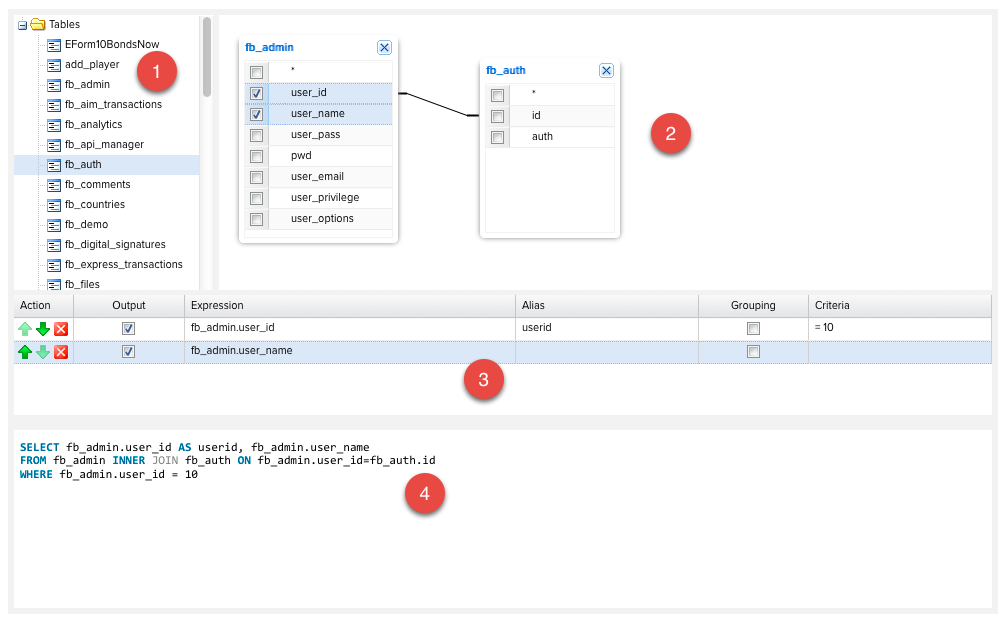

Home > Editor Interface Elements > Visual SQL Query Builder
In Brief: Use this feature to create SQL statements with no coding.
Dependencies: A valid database.
Hints & Tricks: PostgreSQL users can only query agsinst the 'public' schema, other schema within a database are not supported.
Options/Properties
General Usage
The RackForms Visual SQL Query Builder allows us to create SQL queries with simple drag and drop actions, as opposed to hand-writing the SQL code.
Key to this process is understanding the query builder interface, and its interactions with the SQL query item being edited.
We gain access to the query builder by clicking any Visual SQL Query Builder button in the editor interface. The window below will display. Key to this process is the query editor uses the connection properties defined in the SQL items Data Source properties box if set, or the default connection properties of your RackForms install if left blank.
That is, if no data source properties are defined, we simply connect to your RackForms database. If we do have a connection defined, we use that instead. Please note the SQL Query Builder does not currently show connection errors, so we'll want to make sure our values are correct.
Once in the editor we have 4 main areas that define our query.
Any values displayed in (4) are automatically placed into the SQL Query box you activated the query for. Thus, it's important to note this editor will erase any current query you've defined without warning. This also means we never need to explicitly save or commit the code. Any and all updates in this area are automatically saved in real time.
We'll now define each of the 4 areas:

1. This is a list of tables your database contains. Double click or drag from this list to (2) to start building your query.
2. Tables we add from (1) display in this box, along with a list of columns that table contains. Click the checkbox next to each column to add it, or the (*) to select all column from that table.
Please note we can also create joins by dragging from one column to a second column in a different table.
3. This area contains extra information and filters for our selected fields. For example, as shown above we can create column aliases, add select criteria, and define groups.
4. This area is simply the raw SQL code your query is being defined as. Experts may wish to review this area for technical details.
